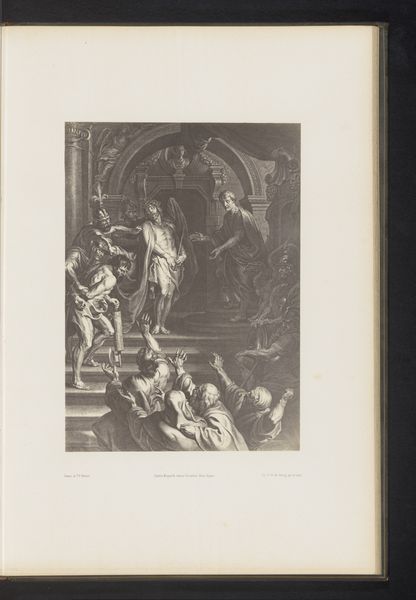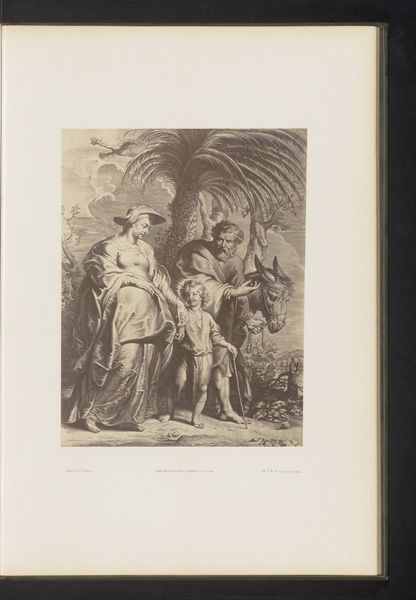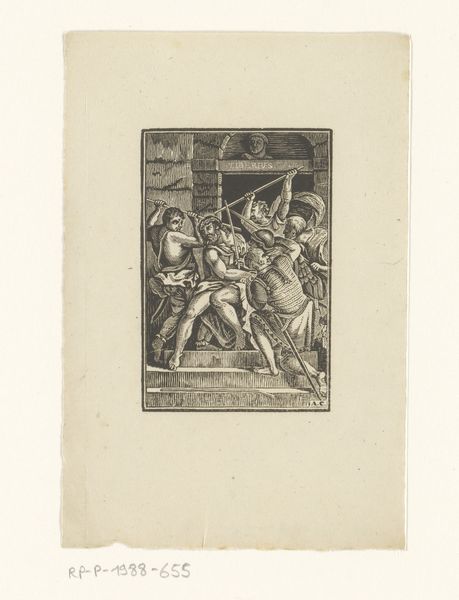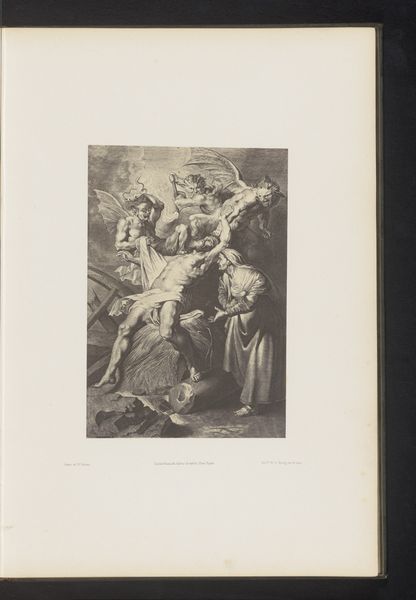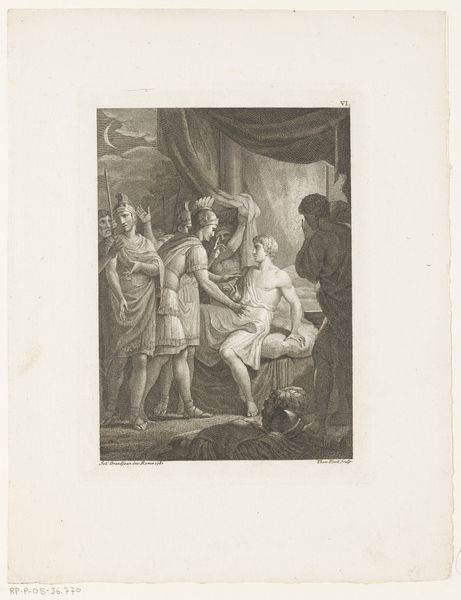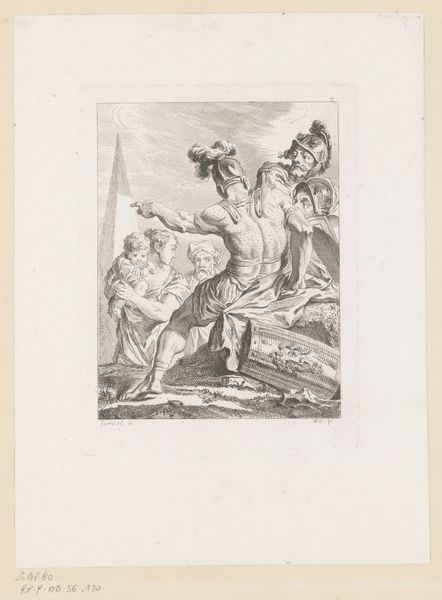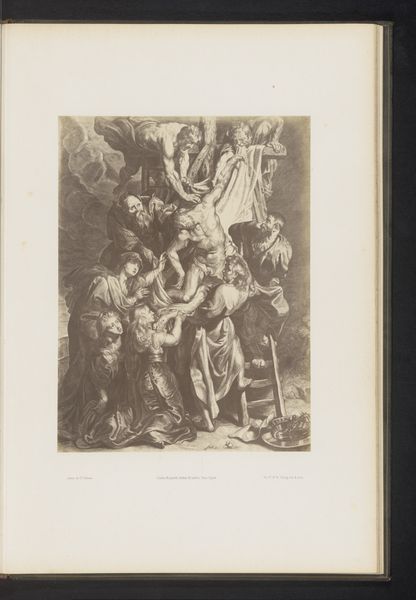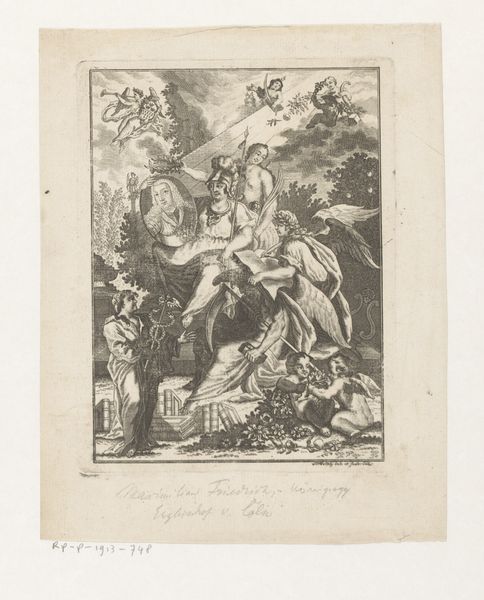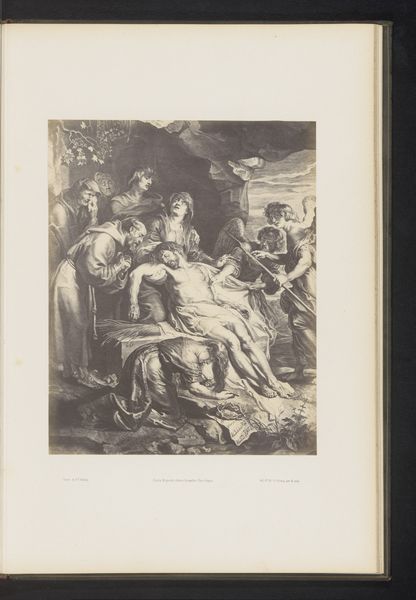
Fotoreproductie van een gravure van Elia in de wildernis, gevoed door de engel door Conrad Lauwers, naar het schilderij door Peter Paul Rubens before 1858
0:00
0:00
Dimensions: height 304 mm, width 243 mm
Copyright: Rijks Museum: Open Domain
This engraving by Jean Louis Bargignac, after Peter Paul Rubens, captures a pivotal moment: Elijah in the wilderness, sustained by an angel. Here, the angel, a symbol of divine intervention, offers nourishment to the prophet. Consider how the motif of the angel as a divine messenger and provider has echoed through art history. From winged figures in ancient Near Eastern art to the Renaissance depictions of annunciations, the angel bridges the earthly and divine realms. Think of Nike of Samothrace. Yet, in the image before us, the angel’s offering is not just sustenance but salvation; Rubens uses it as an allegory of spiritual and physical survival. The psychological impact of this image is powerful. The gaunt figure of Elijah contrasts sharply with the youthful, radiant angel. This pairing evokes the deep human longing for protection and deliverance during hardship. The enduring appeal of the image lies in this potent blend of vulnerability and hope, speaking to our collective memories of seeking comfort in times of despair. In this cyclical progression of symbols, the angel resurfaces through time, transformed yet still bearing the weight of its original message.
Comments
No comments
Be the first to comment and join the conversation on the ultimate creative platform.
